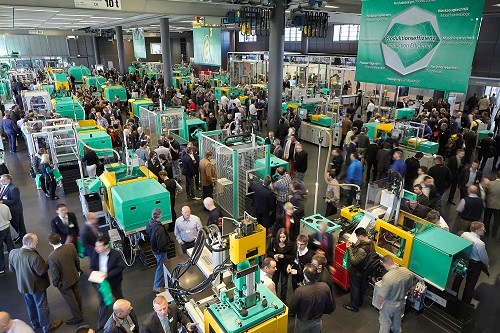A Couple of Interesting Tidbits from Arburg’s Technology Days
Four-cavity mold rotates 45掳 for multi-component lens molding.

Among the numerous machine demonstrations at annual Technology Days open house at its German headquarters in late March was one that struck me as a bit unusual. It was a two-component application running on an all-electric Allrounder 520A. The mold produced four lenses with a thickness of 25 mm in only 55 sec. The interesting part is that the mold rotated in increments of 45° (instead of the more typical 90° or 180°) with injection. Cooling, and part removal occurring simultaneously at the eight stations.
Another interesting detail was the introduction of new maintenance packages that contain, for example, lubricants and tools required for specific Arburg machines. (U.S. office is in Newington, Conn.)
Related Content
-
Process Monitoring or Production Monitoring — Why Not Both?
Molders looking to both monitor an injection molding process effectively and manage production can definitely do both with tools available today, but the question is how best to tackle these twin challenges.
-
Understanding the Effect of Pressure Losses on Injection Molded Parts
The compressibility of plastics as a class of materials means the pressure punched into the machine control and the pressure the melt experiences at the end of fill within the mold will be very different. What does this difference mean for process consistency and part quality?
-
Injection Molding: Focus on these Seven Areas to Set a Preventive Maintenance Schedule
Performing fundamental maintenance inspections frequently assures press longevity and process stability. Here’s a checklist to help you stay on top of seven key systems.



